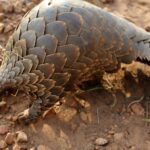Pangolins In South Africa! They are fascinating creatures! Not only do they have a unique appearance, but their abilities are amazing. These scaly-armored mammals attract both researchers and wildlife lovers. They slurp up ants and termites with their long tongues – important for maintaining ecological balance.
Their armor-like scales are made of keratin, protecting them from predators. Unfortunately, illegal hunting and trafficking threaten these extraordinary animals due to the high demand for their meat and scales in traditional medicine. This has caused a significant decline in pangolin populations across South Africa.
To save these creatures, legislation is being strengthened against poaching and trading. There are also organizations, like Pangolins South Africa, dedicated to combating this issue. They raise awareness about the plight of pangolins through educational programs and community outreach initiatives. They also support conservation projects to rehabilitate and release injured or confiscated pangolins back into the wild.
For example, a pangolin named Hope was rescued by Pangolins in South Africa after being found injured in a field. After months of care, Hope made a full recovery and was released back into her natural habitat. This success story shows the importance of preserving the environment and protecting vulnerable species, like pangolins!
Key Takeaways
- Pangolins are highly endangered species found in South Africa.
- Pangolins are the most trafficked mammal in the world due to their scales, which are used in traditional medicine.
- South Africa is a key transit and destination country for pangolin trafficking.
- The South African government has implemented various measures to combat pangolin trafficking, including stricter law enforcement and collaboration with international organizations.
- Conservation efforts are being made to protect pangolins in South Africa, including the establishment of protected areas and rehabilitation centers.
- Public awareness and education campaigns are crucial in reducing demand for pangolin products and promoting conservation efforts.
- Collaboration between government agencies, NGOs, and local communities is essential in effectively addressing the pangolin trafficking crisis in South Africa.
Overview of Pangolins

Pangolins are fascinating creatures, known for their unique appearance and endangered status! Native to Asia and Africa, these scaly anteaters have a distinct scale-covered body and are nocturnal. They feed on insects, termites, and ants, using their strong claws to dig burrows and climb trees. These solitary animals prefer quiet environments away from human disturbances. Sadly, all eight species of pangolins are under threat due to illegal poaching of their scales, meat, and perceived medicinal properties.
These remarkable creatures can curl themselves into a tight ball when threatened. Their sharp scales act as armor, protecting them from potential harm. Plus, they have a long tongue – often longer than their entire body – which they use to capture insects with great precision.
To save pangolin populations, it is crucial to enforce regulations on wildlife trade, support conservation organizations, educate local communities near habitats, invest in research, and collaborate with international organizations and governments. All of these steps will address the root causes of pangolin endangerment and help preserve these extraordinary creatures for future generations. In South Africa, these elusive creatures have made themselves at home in the savannah, rolling around like armored beach balls and confusing would-be predators with their impeccable fashion sense.
Habitat and Behavior of Pangolins in South Africa
To understand the habitat and behavior of pangolins in South Africa, delve into their distribution in the region. Discover the sub-heading that will shed light on this aspect, providing you with valuable insight into the presence of these fascinating creatures in different areas of South Africa.
Distribution of Pangolins in South Africa
Pangolins, these fascinating creatures native to South Africa, can be found in lots of different habitats. Grasslands, savannahs, and forests – they’re all homes to these unique mammals. They’ve adapted well to their surroundings and are important for keeping the environment in balance.
Let’s look into the distribution of pangolins in South Africa. Here’s a table showing percentages for various regions:

| Region | Percentage |
|---|---|
| Western Cape | 12% |
| Eastern Cape | 15% |
| KwaZulu-Natal | 25% |
| Mpumalanga | 20% |
| Gauteng | 28% |
The behavior of pangolins also varies depending on their habitat. In heavily wooded areas such as Mpumalanga and KwaZulu-Natal, they can stay hidden in the trees. But out in open grasslands like Gauteng, they dig burrows for shelter.
It’s clear that we need to protect pangolins and their habitats. We must raise awareness about why it’s so important to look after them. We can make a change before it’s too late! Pangolins’ motto is ‘Better roll than be trolled’ – they need help to avoid poaching, habitat destruction, and being mistaken for artichokes!
Threats Faced by Pangolins in South Africa
To address the threats faced by pangolins in South Africa, this section focuses on the various challenges they encounter. Discover how poaching and illegal trade, as well as habitat loss and fragmentation, pose significant risks to the survival of these remarkable creatures.
Poaching and Illegal Trade
Poaching and illegal trade are a huge risk to pangolins in South Africa. People want their scales, meat, and body parts for money. Here are the facts:
- Temminck’s Pangolins go for $5,000-$7,000/kg and 7,500+ pangolins are trafficked each year.
- Ground Pangolins cost $2,500-$3,500/kg with 10,000 pangolins trafficked.
- Lastly, Cape Pangolin $4,000-$6,000/kg for 5,000 pangolins.
This illegal trade is not only bad for pangolins, but it also disrupts ecosystems. It contributes to wildlife trafficking and affects communities that rely on pangolins for a living.
In the fight against wildlife crime, Operation Corona was launched. This joint effort led to the arrest of poachers and traders who smuggled pangolins out of South Africa. It showed the importance of strong measures and international cooperation to protect these animals.
Lastly, habitat loss and fragmentation in South Africa have made it hard for pangolins to find safe places. Now they must play a game of hide and seek where parking lots keep replacing their hiding spots.
Habitat Loss and Fragmentation
Habitat loss and fragmentation are major threats that pangolins in South Africa are facing. Natural habitats are being destroyed, forcing them to adapt to new environments. This leads to their population decline. Deforestation and urbanization are making the situation worse, as food sources are disrupted and movement becomes more difficult. This can cause isolated populations and reduce genetic diversity. To address this, conservation efforts must focus on protecting and restoring habitats.
Fragmentation of habitats brings more problems for pangolins. Smaller patches of land make them more vulnerable to external threats such as poaching and predation. It also limits their access to resources, making it hard for them to find enough food and suitable mates. Therefore, preserving large, continuous habitats is key for their survival.
Habitat loss and fragmentation not only affect pangolins but also disrupt the balance of ecosystems. Pangolins play a significant role in controlling insect populations, keeping forests healthy, and dispersing seeds by how they feed. If we don’t take action, we risk losing not only the pangolins but also the ecological services they provide.
We must act now to protect and restore pangolins’ habitats in South Africa. We can do this through stronger land-use planning regulations, establishing protected areas, and reforesting areas that have been degraded. By understanding the importance of preserving their habitats, we can ensure a future where these incredible animals can roam freely in thriving ecosystems.
It’s time to move away from complacency and take action before it’s too late. We can make a difference in saving these remarkable creatures. Let us not allow ourselves or future generations to witness the devastating consequences of not protecting pangolins, who are an essential part of our natural world. Act today to conserve their habitats and safeguard the biodiversity that supports us all.
Conservation Efforts for Pangolins in South Africa
To ensure the conservation of pangolins in South Africa, there have been various efforts implemented. One vital solution is the establishment of rehabilitation and release programs, which aid in restoring pangolin populations. Additionally, anti-poaching initiatives have been introduced to combat the illegal trade and protect these endangered creatures.
Rehabilitation and Release Programs
Rehab and release programs are essential for pangolins in South Africa. These efforts focus on rescuing injured or confiscated pangolins, providing medical help, and releasing them back into their natural home. Experts are dedicated to giving pangolins a chance to heal and grow in the wild.
The programs involve several steps to ensure successful rehab and release. Pangolins get a health check-up and treatment for injuries/illnesses. They also eat a diet that resembles their natural diet, to build up strength for release.
In larger enclosures, the pangolins practice their natural behaviors, like foraging, climbing, and interacting with other pangolins. This preps them for life outside captivity. When appropriate release sites are available, pangolins may be released together. The process is planned and monitored for its best chances of survival.
Each program is tailored to the individual pangolin’s needs. This decreases the human impact on their natural behaviors and increases survival odds. The Pangolin Working Group in South Africa is at the forefront of these conservation efforts, working with organizations to protect these endangered creatures. No poaching laws are helping bring protection to the world’s most fashionable armor!
Anti-poaching Initiatives
South Africa is essential for the protection of pangolins. Here are three vital points to comprehend the work being done:
- Secret Operations: Special undercover teams are sent to get info about poaching activities, breaking into poaching networks, and helping to break them up.
- Technology Use: High-tech stuff like drones, GPS tracking devices, and thermal imaging cameras are used to boost surveillance and detect likely poaching.
- Community Involvement: Local folks have a huge part in anti-poaching initiatives. Awareness programs and educational campaigns are held to emphasize the significance of pangolins and stop their illegal trade.
Also, laws against wildlife trafficking are rigidly enforced, guaranteeing that those involved face serious consequences for their actions.
Pro Tip: To support anti-poaching efforts, people can assist by reporting any suspicious activities or information to the right authorities.
Role of South Africa in Pangolin Conservation Globally

South Africa is a vital player in conserving pangolins. Its varied landscapes provide habitats for these special creatures. The country has strict laws against illegal wildlife trade.
Raising awareness of pangolin conservation is one of South Africa’s contributions. Educational programs, public outreach, and working with local communities have helped spread understanding about these animals and their part in sustaining ecosystems.
Protected areas have been created to preserve pangolins. The sanctuaries give them safe environments to reproduce and flourish. This preserves their natural habitats and ensures their long-term survival.
Regional partnerships should be formed to tackle transnational issues like poaching and trafficking. Sharing knowledge, resources, and expertise will help in monitoring and enforcement.
Investment in research and technology that can track and monitor pangolins is necessary. GPS devices or satellite tracking systems can gather data on their behavior and movements. This understanding can help devise strategies to protect them.
Engaging local communities in conservation is also important. Sustainable livelihoods should be offered to discourage illegal activities like poaching. These should provide alternative sources of income for communities near pangolin habitats.
South Africa is key to pangolin conservation globally because of its proactive actions, habitat protection, awareness campaigns, regional collaboration, research investments, and community engagement initiatives. Working together can ensure a brighter future for these incredible creatures.
Frequently Asked Questions
FAQ 1: What is the status of pangolins in South Africa?
Answer: Pangolins are a protected species in South Africa and are listed as critically endangered. They are threatened by poaching, habitat loss, and illegal trade. Efforts are being made to conserve and protect them.
FAQ 2: Are pangolins found naturally in South Africa?
Answer: Yes, pangolins are found naturally in South Africa. There are two species of pangolins found in the country, namely the Ground Pangolin (Smutsia temminckii) and the Temminck’s Pangolin (Manis temminckii).
FAQ 3: Where can I see pangolins in South Africa?
Answer: Seeing pangolins in the wild is extremely rare due to their secretive nature. However, some wildlife reserves and sanctuaries in South Africa, such as the Tswalu Kalahari Reserve and the Johannesburg Wildlife Veterinary Hospital, may have pangolins under their care that can be observed.
FAQ 4: How can I help protect pangolins in South Africa?
Answer: You can help protect pangolin in South Africa by spreading awareness about their conservation status, supporting organizations working towards pangolin conservation, reporting any illegal pangolin trade, and avoiding the purchase of pangolin products.
FAQ 5: Can I adopt a pangolin in South Africa?
Answer: While it is not possible to physically adopt a pangolin in South Africa, you can contribute to pangolin conservation efforts by financially supporting organizations involved in their protection and rehabilitation.
FAQ 6: What is being done to combat pangolin poaching in South Africa?
Answer: South Africa has implemented strict laws and regulations to combat pangolin poaching. The government and various organizations are also involved in anti-poaching initiatives, increasing surveillance in high-risk areas, and raising awareness about the illegal wildlife trade.
Conclusion
Pangolins in South Africa are in dire need of protection. Strict regulations, increased public awareness, and sustainable practices are essential for their survival.
Illegal poaching and habitat loss are the main threats. Regulations must be implemented to ban hunting and trading, with harsh punishments for offenders.
Public understanding of their importance is also vital. Education campaigns, workshops, and outreach programs can teach people about pangolins’ role in South African biodiversity.
Sustainable tourism and farming must be encouraged. This reduces disturbance to habitats and deforestation, as well as enabling coexistence with wildlife.
Government, conservation organizations, local communities, and individuals must work together to prioritize pangolin protection. With these efforts, a thriving ecosystem including these creatures can be ensured for future generations.




